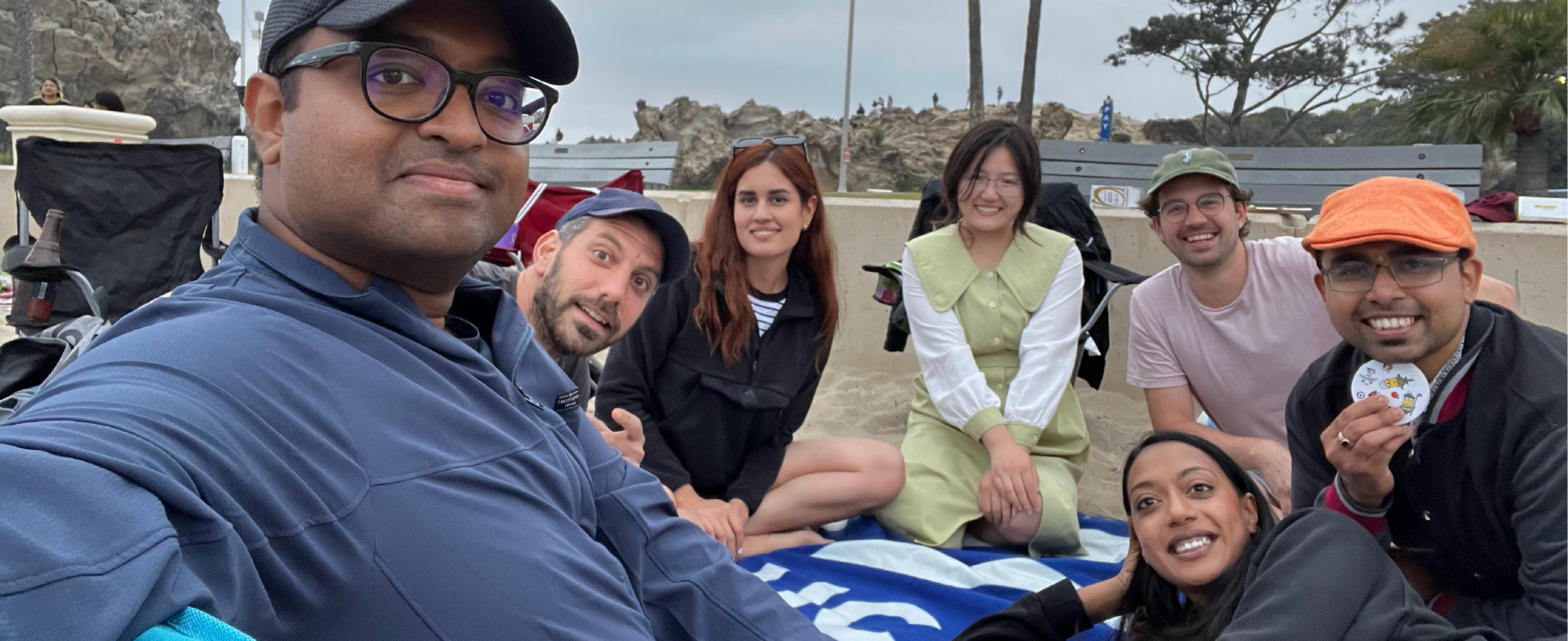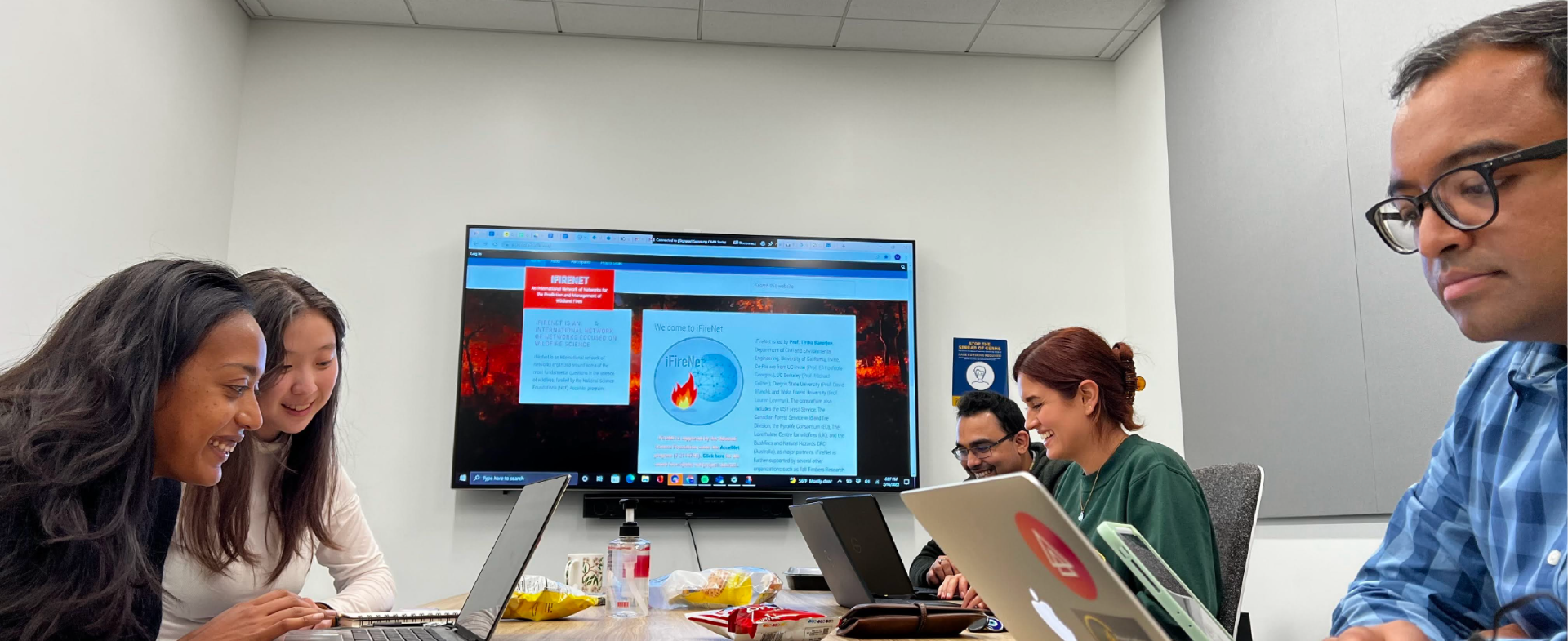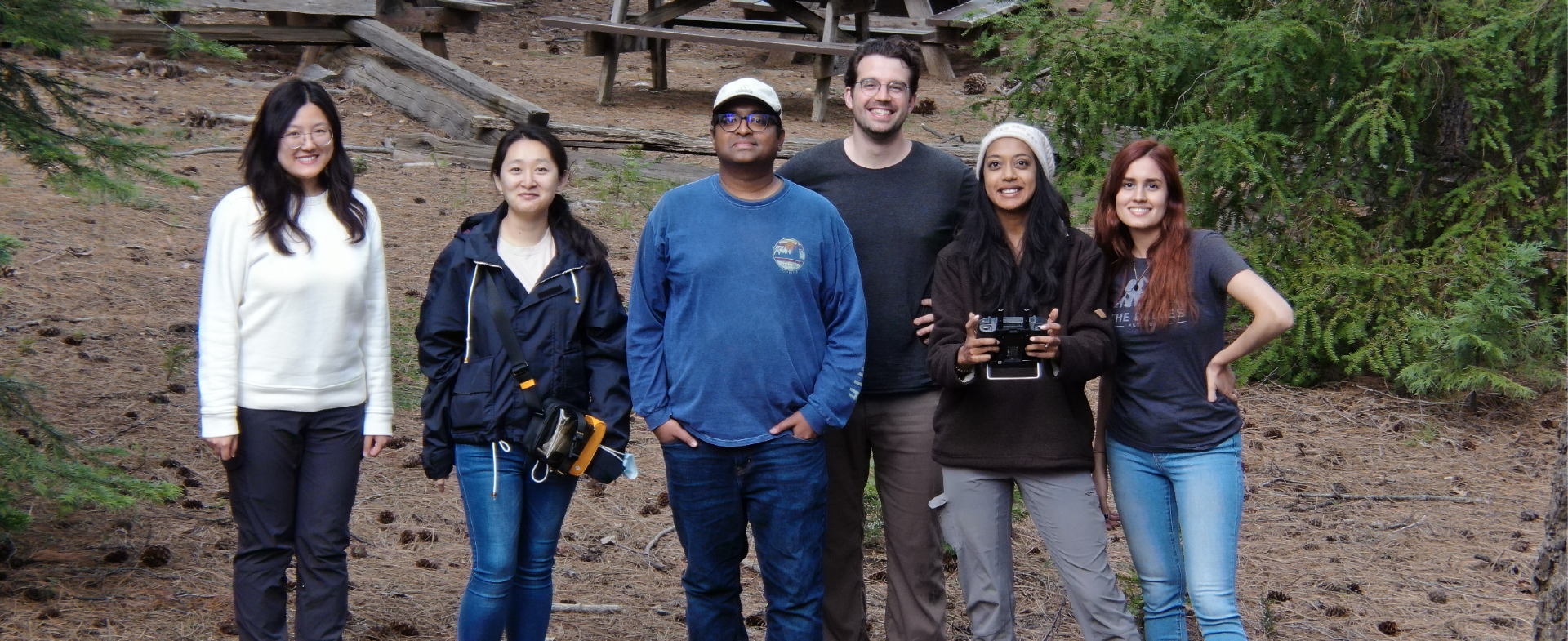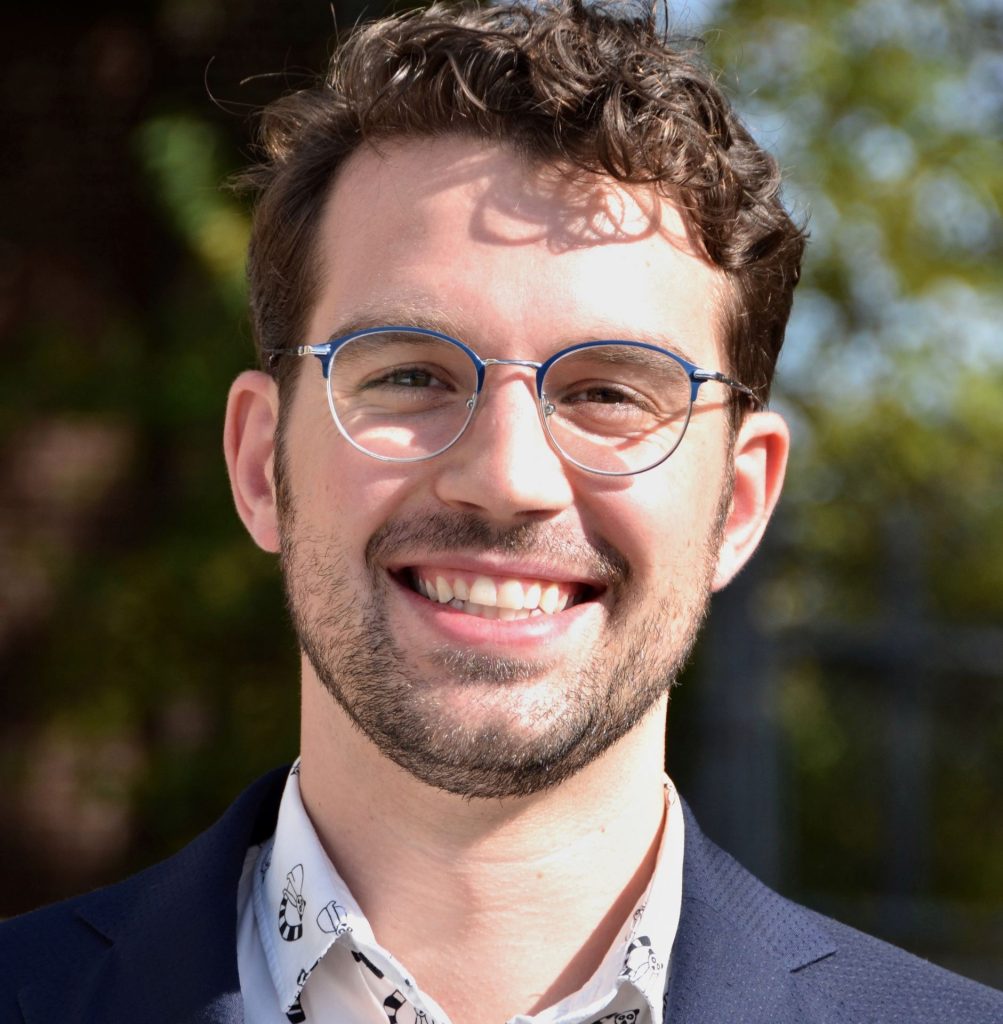Principal Investigator
Department of Civil and Environmental Engineering
The Henry Samueli School of Engineering, Interdisciplinary Science and Engineering Building (ISEB) 3084,
University of California, Irvine, CA 92697-2700, USA
(949) 824-9230
Dr. Tirtha Banerjee is an Associate Professor at the Department of Civil and Environmental Engineering, University of California, Irvine. He received his B.S. degree in Civil Engineering from Jadavpur University (Calcutta, India) in 2011 and his Ph.D. in Environmental Science from Duke University (Durham, NC, USA) in 2015. After conducting postdoctoral research at Karlsruhe Institute of Technology (KIT) in Germany and Los Alamos National Lab (NM, USA) as a Chick Keller Postdoctoral Fellow in climate science and subsequently, as a Director’s Fellow in atmospheric sciences, he joined UC Irvine in the fall of 2019, where he was an assistant professor till 2023. Research in the Boundary Layers and Turbulence (BLT) Lab led by Prof. Banerjee involves wildfires, environmental flows, and biosphere-atmosphere interaction using a range of theoretical, numerical, and experimental techniques. He leads the NSF-funded international consortium on wildfires, called iFireNet, and the UCOP-funded SPARx project aimed at transforming prescribed fire practices for California. He was recently awarded the NSF CAREER Award to conduct research on the role of turbulent fluid dynamics in wildland fire behavior. He currently serves as an Associate Editor for the journal Earth Systems and Environment (Springer) and as an editorial board member for the journals Agricultural and Forest Meteorology (Elsevier) and Scientific Reports (Nature). Prof. Banerjee also serves on the Science Advisory Panel of the Fire and Forest Resilience Task Force in the State of California.
Postdoctoral Scholars
My research interests lie in mathematical formulation and computational implementation of natural processes, emphasizing fluid mechanics. Currently joining a Postdoctoral scholar position at the University of California, Irvine, and under the supervision of Tirtha Banerjee, physically-based models are developed, in the effort to uncover the fundamental driving mechanisms of wildfires. During my PhD at Washington State University, the research was focused on fluid flows driven by capillary forces in zero/microgravity conditions. My contribution to this project was to build a mathematical model that describes fluid motion on wetting and non-wetting solid substrates. The motivation for this research, funded by the NASA BRAINS project, was on micrometeorites and orbital debris which may penetrate the outer shells of man-made objects. A repair scenario was proposed based on brazing in space, while diffusive and sharp interface models with moving boundaries (contact lines) were used to predict dynamics and equilibria. In the heart of those two phenomenologically different problems lies the multiscale nature of their physical processes. Is there any physics-based model that could capture molecular scale interactions (motion of contact lines and chemical reactions) and surface tension forces? If yes, up to what degree? How could we build a bridge between chemical reactions(molecular scale) in the process of combustion and the transport of that energy release(macroscale)? Under what dissipative mechanisms can these questions be addressed? As a PhD intern at Pacific Northwest National Lab, I worked on the numerical implementation of the non-local model along with the level set method and diffusive boundary conditions. The model expresses the surface tension forces as a molecular-force-like function, enabling us to capture flow’s characteristics in a wide range scale. During my master’s and undergraduate programs at Washington State University and the University of Crete, I developed computational and theoretical skills in mathematics including continuum mechanics (solids and fluids) and numerical analysis.
My path as a scientist started as an undergraduate at Duke University where I worked with the late Prof. Behringer and Abe Clark on impacts on granular media. There I was introduced to high-speed imaging which has become a fundamental tool for me as an experimentalist. My work in granular flows sparked an interest in fluid dynamics which I followed to the University of Minnesota where I completed my PhD with Filippo Coletti in 2020. During the course of my PhD, I worked with a team to design a turbulence box, meant to generate homogeneous turbulence over a large volume. With this setup, we could study the flow from the smallest turbulent length scales, the Kolmogorov scales, to the largest integral length scales, all while maintaining homogeneity in the flow greatly simplifying the complexity inherent in such a chaotic system. My experiments focused on the dynamics of particle-laden turbulence and I was interested in how the coupling between the air turbulence and the particles leads to all sorts of interesting (and beautiful) phenomena, like clustering, as well as dynamics like enhanced settling which has implications for meteorological models predicting snowfall in the atmosphere, among others. The connections to earth science in my fundamental research led me to study other multiphase turbulent flows with connections to our planet, like particle-laden plumes, and after graduating, sand and snow transport by wind. The latter, specifically snow and sand saltation, I studied during a postdoc at ETH Zürich with Prof. Coletti between September 2020 and April 2022. There I collaborated with the Swiss Federal Laboratories for Materials Science and Technology (EMPA) to perform high-speed imaging experiments on sand particles in their wind tunnel. I also collaborated with Michi Lehning at the WSL Institute for Snow and Avalanche Research SLF in Davos, Switzerland where I used their wind tunnel to study the saltation of fresh snow falling in the Swiss Alps. Here at UC Irvine, I continue to find new ways to apply my interests and knowledge in fluid dynamics to environmental and planetary science through the work the Banerjee lab does on wildfires. I’m particularly interested in the coupled physics between the atmospheric boundary layer and wildfire as well as ember transport dynamics. As someone with a love for the outdoors, I’m excited to be performing field experiments around California on prescribed fires, which provide interesting and (relatively) safe opportunities to study wildfire physics.
Ph.D. Students:
Shu Li is a Ph.D. student at the University of California, Irvine, under the supervision of Professor Tirtha Banerjee. She received her M.S. in Civil and Environmental Engineering from UC, Irvine in 2020. Her research interests are natural hazard modeling and uncertainty analysis, with an emphasis on wildfires. She is committed to understanding fire behaviors under complicated natural conditions, simulating and predicting the spread of wildfires using mathematical models and machine learning techniques, and analyzing the role of environmental and anthropogenic variables in wildfires. Her recent research activities include the early detection of wildfires using social sensing and satellite data, the analysis of the spatiotemporal patterns of wildfires in California, and the improvement of the wildfire-urban interface (WUI) mapping method.
Margarita finished her undergrad studies as a Renewable Energy Engineer at Universidad Autónoma de Baja California, Mexico in 2017. Since then she worked in the solar energy field for two years before starting her M.s./Ph.D. studies at UCI in the fall of 2019. Her current research focuses on the understanding of fire break distribution, statistical analysis along networks at wildfire risk zones, and statistical modeling for wildfire occurrence and distribution.
Ajinkya Desai is an incoming Ph.D. student in the BLT Research Group. After graduating with his B.Tech. from the Indian Institute of Technology (IIT) at Kanpur, where he worked primarily in the field of computational fluid dynamics, he moved to the USA for his Master’s in Aerospace Engineering at UC San Diego. At UCSD, his work involved analyzing oceanographic field data to explore mechanisms of cross-shore transport in the inner shelf off the coast of Point Loma. For the past few years, he has been working as an academic researcher at IIT Hyderabad in the field of nonlinear dynamics, with a focus on cross-flow-induced vibrations in heat-exchanger tubes. His current research includes the application of fluid mechanics and turbulence research to the simulation of wildfire behavior. Furthermore, he is also skilled at editing and proofreading scientific manuscripts for publication. His non-academic interests include dramatic arts, writing, and spirituality.
Subharthi Chowdhuri earned his bachelor’s in mechanical engineering from Jadavpur University (Calcutta, India) in 2009. After earning his bachelor’s, he moved to the Indian Institute of Astrophysics (Bangalore, India) as a junior research fellow, where he conducted research on magnetohydrodynamics. Later, in 2011, he joined as a scientist in the Indian Institute of Tropical Meteorology (Pune, India), where he pursued research in atmospheric boundary layer flows. During his time at IITM (2011-2022), he developed a novel scaling approach to study the coherent structures in atmospheric turbulent flows and made progress toward the development of an “event-based framework” as an alternative to spectral modeling for wall-bounded turbulent flows. While employed at IITM, he completed his Masters in atmospheric science from the University of Pune during the period 2013-2017. In August 2022, he joined the Boundary layer and turbulence lab at UCI as a Ph.D. student, where he plans to conduct his research on wall-bounded flows with a specific focus on atmospheric turbulence.
Antonio Cervantes is a Ph.D. student in the Department of Civil and Environmental Engineering at the University of California, Irvine, working in the BLT Research Group. He received his bachelor’s degree in 2021 and master’s degree in 2023 in Mechanical Engineering at San Jose State University (SJSU). During his undergrad, Antonio was interested in automotive engineering and robotics. He led a student engineering club that designed a virtual human-powered vehicle for the 2021 ASME Digital E-Fest competition. He also designed and built an autonomous food delivery robot for his senior design project. During his master’s degree, he began research in the Mechanical Engineering Department and Wildfire Interdisciplinary Research Center at SJSU under the supervision of Ali Tohidi. His research began with the modeling of biological aerosol dispersion in wildfire smoke. He contributed to the development of a particle dynamics model capable of simulating millions of aerosols in a smoke plume. He then helped develop a firebrand (ember) particle dynamics model. Using the firebrand model, Antonio studied the influence of turbulence intensity on firebrand depositions. This research sparked his interest in fluid dynamics and turbulence. He is now interested in learning about the influence of forest canopy turbulence on wildfire and ember spread. He plans to use numerical modeling to research the impact of forest canopy heterogeneity on wind flow and how these interactions can affect wildfires. Antonio’s research aligns greatly with his appreciation of the environment. He spends a lot of his time outdoors as an avid mountain biker.
Former lab members:
Janine Baijnath Rodino (Postdoc, 2020-2023) – currently Assistant Adjunct Professor and Director of Meteorology, UCLA.
Assaad Mrad (Postdoc, 2021) – currently Data Scientist at Stantec.
Mukesh Kumar (Ph.D. student, 2019-2022) – currently a postdoctoral scholar at Los Alamos National Laboratory.















